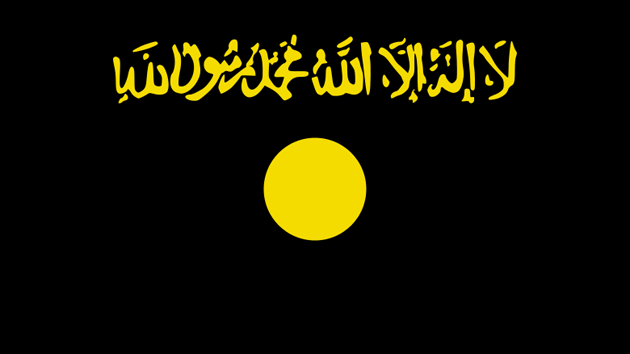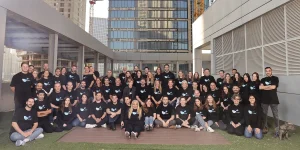Primary goals: global Jihadi war against the crusaders and the Jews, the formation of a united Islamic front against Western-secular forces, the extinction of Western influence and presence in Muslim countries, the undermining and overthrow of “heretical” regimes in Muslim countries, establishment of an Islamic caliphate under Sharia law.
Area of activity: global – mainly Afghanistan and Pakistan with branches spread throughout African, Middle Eastern and South East Asian countries.
Main branches: Al-Qaeda in the Arabian Peninsula (primarily Yemen), Al-Qaeda in the Islamic Maghreb (Algeria, Morocco, Libya, Mauritania, Mali, Niger, Nigeria and Chad), al-Shabaab (Somalia), Tahrir al-Sham (Syria).
Strength: tens of thousands of supporters and members worldwide.
Primary funding sources: kidnappings and ransom payments, taxes, illegal trade (mainly arms, cigarettes and drugs), aid and donations.
Since it was founded in the late 1980s by a Palestinian sheikh, a Saudi engineer and an Egyptian doctor, Al-Qaeda has had a very long journey, and their name will go down as the most lethal terrorist organization in modern history. This is the non-state organization responsible for the most murderous attack in history, whose actions have rewritten history, changed the rules of the game, spreading mass terror into the 21st century.
But today’s Al-Qaeda is radically different. Al-Qaeda 2.0 is a worldwide network of fundamentalist Sunni-Islamist and Salafi-Jihadist organizations, that brings together different terror groups, all fighting a worldwide jihad to overthrow regimes in dozens of Muslim countries with the goal of establishing an Islamist caliphate regime. “Over the years Al-Qaeda essentially became an affiliated organization,” says Dr. Schindler in a special interview for Forbes Israel, “and as such, distributes ‘franchises’, much like McDonalds.”
The complete terror organization ranking
And like the headquarters of McDonalds, situated in Illinois, USA, that does not directly operate the McDonalds in Kiev, Ukraine – so is the management of Al-Qaeda, tucked away in hidden headquarters somewhere in the mountains of Pakistan. Moreover, the Al-Qaeda headquarters is apparently unable to exert influence even if they wanted to. “The heads of Al-Qaeda are unable to communicate or direct the global operations among its branch organizations, they are unable to fund their offshoots and in fact, each operates mostly independently,” asserts Dr. Schindler. “Al-Qaeda is no longer an orderly organization that gives orders and instructions. The headquarters exists to ‘represent’ the brand, to give speeches and declarations, but the headquarters itself no longer leads any operations.”
Concerning the loose connection between the core of the organization to its branches, one may learn for instance from the terrible attack in Mogadishu last October, which, according to assessments, was carried out by Al-Shabaab – an official branch of Al-Qaeda. “The core of the organization is not in a position to organize an attack like this or to give instructions to execute such an attack. It is doubtful that the heads of Al-Qaeda even knew that this attack was about to take place,” explains Schindler.
The Al-Qaeda Brand
But even if we are talking about some kind of jihadist confederacy of terror organizations, with a weak governmental core, outlining strategy from an elevation of 20,000 feet – the global influence of this umbrella organization should not be underestimated, as well as the inspiration it provides to its millions of followers, the strategic direction and the powerful reputation of the Al-Qaeda ‘brand’.
Under the organization’s fundamentalist umbrella are some of the deadliest organizations operating today. According to the US State Department terror report on Al-Qaeda, a number of the primary branches include: Al-Qaeda in the Islamic Maghreb (Libya, Algeria, Ivory Coast, Mali, Niger, Tunisia and Burkina Faso), Al-Qaeda in the Arabian Peninsula (Yemen and Saudi Arabia), Al-Qaeda in the Indian Peninsula (India, Pakistan and Bangladesh), al-Shabaab (Somalia), and Tahrir al-Sham (Syria).
Throughout 2016, these organizations initiated, planned and executed 726 different attacks that claimed the lives of over 2,000 people. Additionally, Al-Qaeda closely cooperates through mutual shifting of information, money, weapons and manpower, with dozens of other terror organizations the world over, from Nigeria and Sudan in Africa all the way to China, Indonesia, and the Philippines in Asia – who themselves are responsible for hundreds of terror operations and the killing of thousands more.
Just as the organization changed over the years, so too did their means of funding. In the past, the sole leadership was fundraising, financing and executing the organization’s operations. Today Al-Qaeda is a distributed body, light on financial resources, and strategically directs its subordinate organizations with only partial influence over what happens (see ISIS case). Al-Qaeda leaders depend primarily on donations and funds redirected from various charity organizations, sometimes receiving money directly from the branch organizations themselves, operating independently to raise capital.
Al-Qaeda of the Islamic Maghreb for example, is mainly active in Central and Western Africa and exploits the region’s instability and the penetrable borders of the countries in which its operations are based. In the past they enjoyed the extensive capital flowing in thanks to the coup in Libya and currently deal in the illegal trade of drugs, weapons, cars and people – and recently in the increasingly profitable branch of illegal trade in cigarettes and tobacco. A special report by KPMG firm estimated that the illegal cigarette market in the countries of the Maghreb in 2016 constituted tax losses of about 565 million dollars, all told, with a significant portion of this amount flowing directly to the criminal and terrorist organizations controlling the region. The scope of the illegal tobacco trade in North Africa currently stands at more than a billion dollars annually, and according to the UN comes out to about 60 million black market cigarettes annually.
Strategic Control of Africa
The close network of ties with local tribes and the strategic control over extensive territories in North and West Africa have made Al-Qaeda of the Maghreb a central player in the illegal trade business – enabling the organization to earn tens of millions of dollars a year. Abductions and ransom payments also constitute a large source of income for the group, bringing in additional millions of dollars annually.
Like its brother in the West, Al-Qaeda of the Arab Peninsula takes great advantage of the local instability and local support, particularly in Yemen, to occupy territories, consolidate its hold in the region and so produce sizable income streams. Two years ago, for instance, the organization succeeded in taking over Mukalla, an important central port city in Yemen. Their control of the city, held until April 2016, generated about 2 million dollars a day for the organization from collecting protection fees and taxes, as well as pocketing an additional 20 million dollars from plundering local banks – according to a special report of the UN Security Council.
In addition, Al-Qaeda of the Arab Peninsula continues to create ongoing revenue streams from abductions and ransom payments, as well as donations from charities of wealthy notables, primarily from the Gulf States. Despite being forced to eventually withdraw from the city of Mukalla after a military campaign against them, the organization declared that they would continue to strengthen their hold in southern Yemen. They have already announced their occupation of a number of strategic objectives in the area. If they succeed in accomplishing what they already have in the past, the organization’s budget will jump significantly.
Jabhat al-Nusra, Tahrir al-Sham in its current incarnation, is Al-Qaeda’s proxy in Syria. Despite declaring independence from the umbrella organization at the beginning of 2017, they remain under the ideological wings of the global Al-Qaeda and this move has been perceived as lip service to the creation of a jihadist union in the struggle to topple Assad’s regime. The extremist Sunni organization’s income comes primarily from ransom payments and generous donations coming from the wealthy Sunni Gulf states. This year the organization wrangled a hefty sum of money for the provocative transaction in which they released Qatari royalty in exchange for the unprecedented sum of an estimated $130 million, according to Financial Times.
A relatively new organization in Al-Qaeda’s portfolio, but a veteran of Africa’s bloody terror arena, is al-Shabaab, the Somalian terror group. In 2016 alone the extremist group carried out hundreds of murderous attacks which together killed 4,300 people. Following the shocking attack in Mogadishu this year in which it appears that they were involved, the Somalian-jihadist organization has reached a new level of violence.
In 2016 they had already surpassed that of the Nigerian organization Boko Haram and were ‘crowned’ the most lethal terror organization in the continent of Africa. Like the rest of Al-Qaeda’s destructive affiliates, al-Shabaab also obtains its own funding. According to a UN report, the organization raises funds mostly through taxing the inhabitants of the territories under its control. Additional funding comes from pirate mining and illegal coal trade as well as abductions and ransom payments – all of which make tens of millions of dollars per year for the terror organization.






